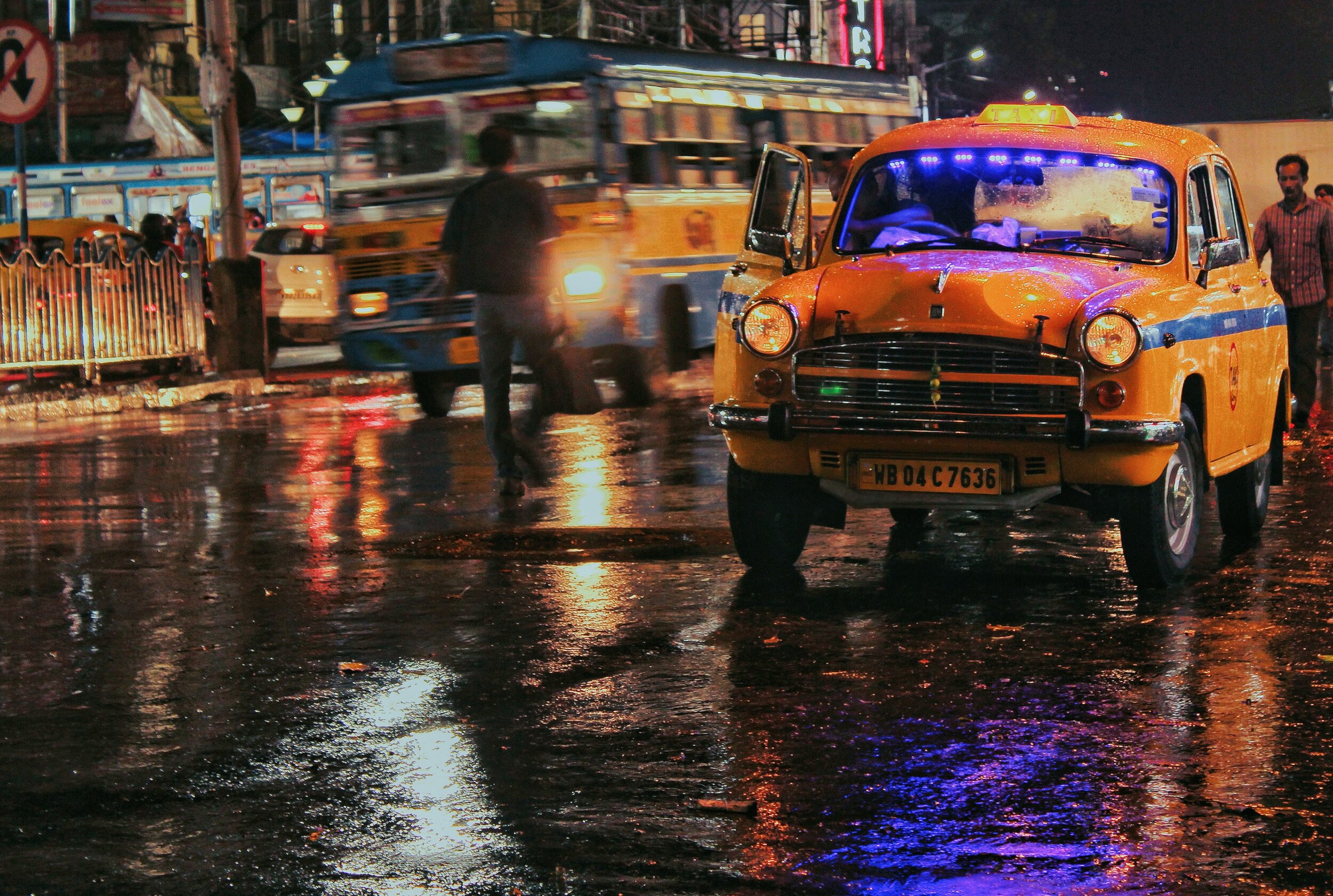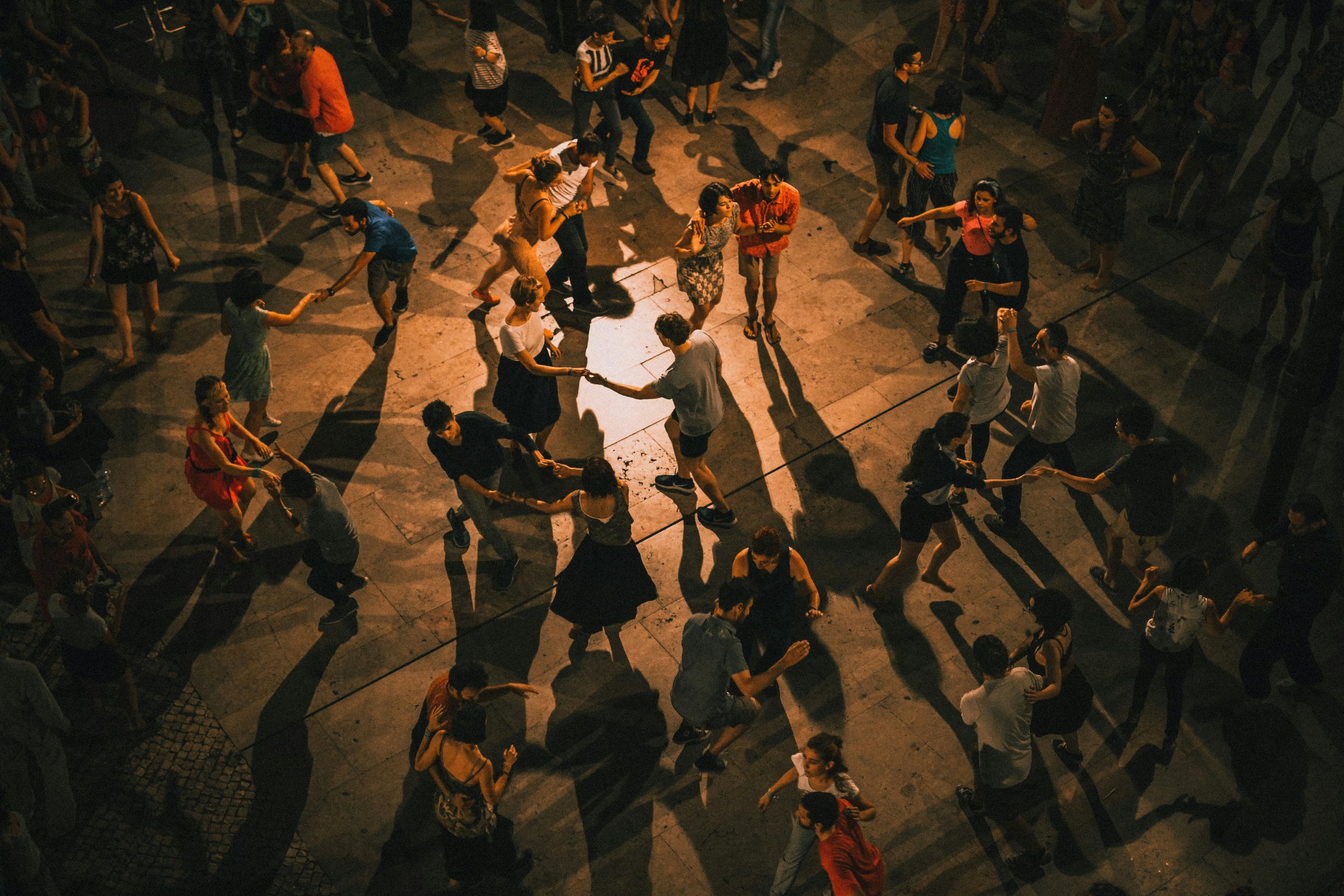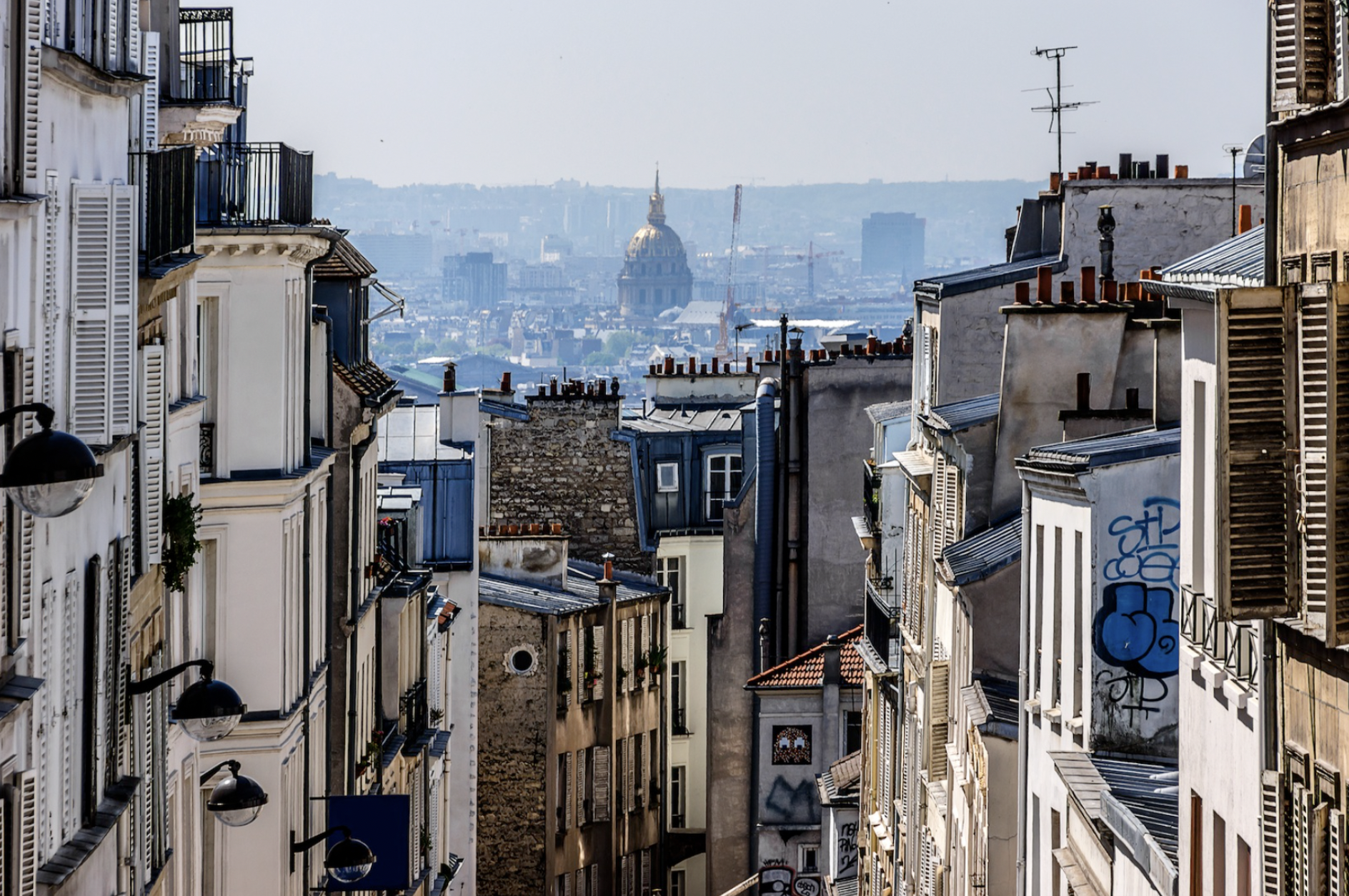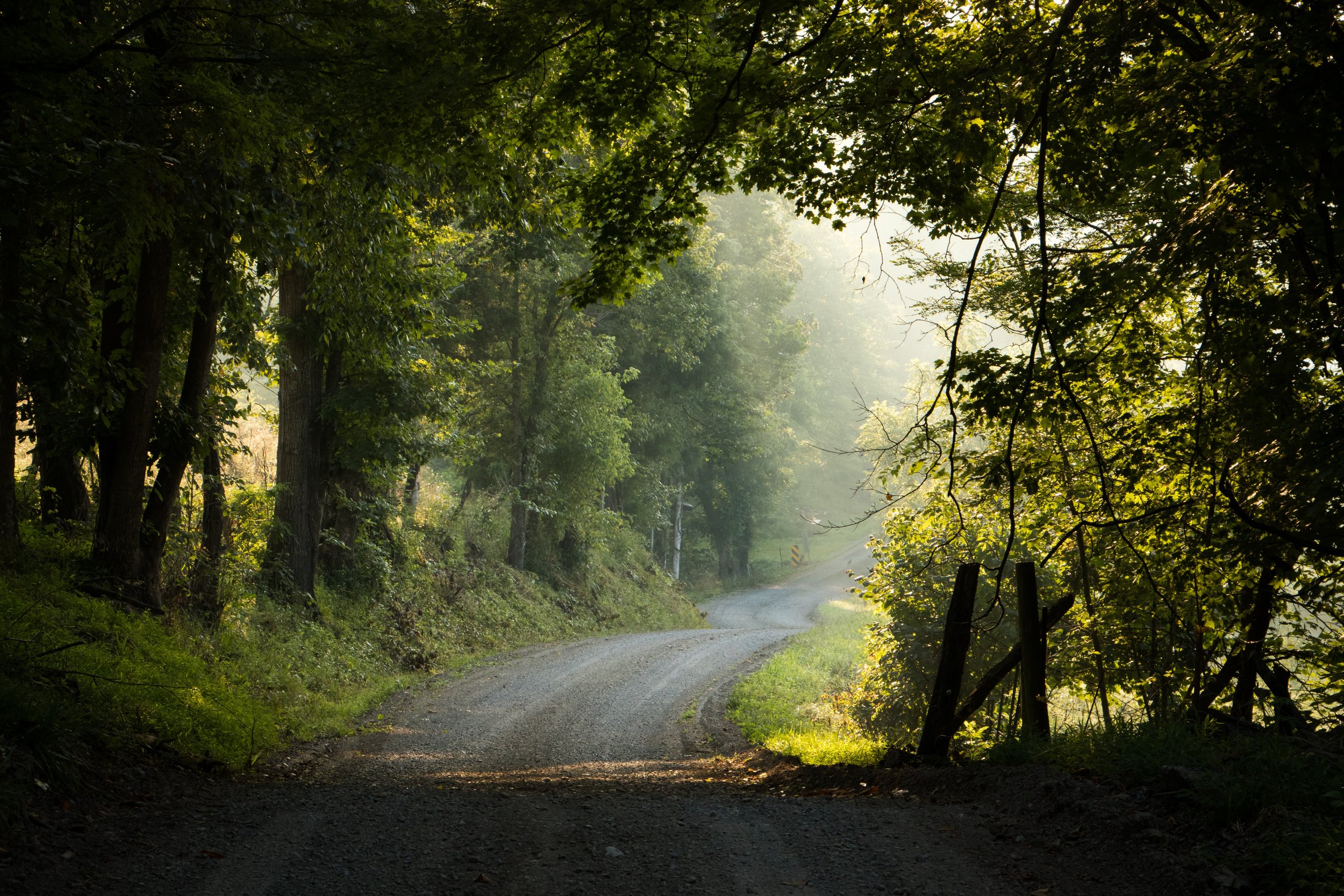Jhumpa Lahiri, Hand-Painted Buses, and Arriving in Kolkata

On College Street, in North Kolkata, where the tram wobbles through the traffic a few times an hour, hundreds of used-book stalls crowd the narrow sidewalk. With an orchestral swell of honking that surges with rush hour, motorbikes and taxis swerve around the tram, the street dogs, and the man on the curb grinding pale stalks of sugarcane through his bright green press. But every morning, before the swarms of undergrads push their way to class, each little metal kiosk is unlocked and unfolded, the towers of books restacked for another day.
Walking along College Street is now part of my daily commute. I recently uprooted my husband and seven-year-old daughter from our home in Brooklyn to begin a research fellowship in Kolkata, where I’m also teaching creative nonfiction at Presidency, the oldest “modern” university in Asia, founded on College Street in 1817. With mile-high ceilings, arched doorways, and enormous white wooden doors with slats like shutters, the classrooms of Presidency have been shaping the minds that shape Indian intellectual life for over two hundred years.
Separating the deafening noise of the street from the quiet of the potted dahlias that line the veranda, the campus gates function less like a security check than a threshold between worlds. The tangible world of diesel exhaust and frying pakoras from the conceptual world of ideas.
But the other afternoon, walking to the Metro after class, I found myself transported to a different Kolkata altogether. Staring at a pile of textbooks—physics and chemistry—that I would never buy, I realized that I was not looking for books at all, but for traces of Udyan and Subhash, brothers at the heart of Jhumpa Lahiri’s 2013 novel The Lowland. In this stampede of a city, in the winter smog that does not burn off with the afternoon sun, it was as if I might catch a glimpse of two lanky college boys with a thin bag of homespun cotton over their shoulders, to carry home the books they would have bought on College Street.
As my initial reading of The Lowland came to a close more than five years ago, I turned directly from the last page back to the first, starting it again. Unable to let it go. And I’ve continued to periodically reread it ever since.
Primarily set in the late 1960s, the book follows Udyan, as he joins the Naxalites, a misguided movement of armed revolution, as well as Subhash, who leaves India to do his PhD in Rhode Island. While I identified with both Udyan’s idealism and Subhash’s pragmatism, what I loved most was the book’s portrait of Kolkata. The silver Ilish fish sold on wet burlap at the market and brought home to fry in turmeric; the second story balconies from which to watch the city churn; the hand painted buses vibrant against the dust and the decay.
Photo by the author.
But not until I caught myself searching for Udyan and Subhash on College Street, did I consider just how real the book had become to me. How, in fact, it now seemed entirely possible that I had taken unpaid leave from my job, as had my husband, enrolled my daughter in a school of 1,700 kids in which she is the only foreigner, and subjected us to air quality that hovers between “hazardous” and “very bad,” let alone the imminent heat, all because of a book.
*
On the night we arrived, after more than twenty-four hours of travel, the three of us emerged into the frenzy outside the airport and felt the sting of pollution in our eyes. Driving through the darkness, I watched my daughter take in the streets clogged with yellow Ambassador taxis, a cycle rickshaw pedaling into the intersection, its driver barefoot in the cold.
But out of any number of possible first impressions, she finally announced, “the busses are pretty.” With the red traffic light catching her profile, I let out a breath I’d been holding for months. I had been scared she would see only what was broken, only what was dirty. Instead, she observed at once what, in Lahiri’s book, had captivated me: that a city, like a person, is never just one thing. That though this is a city where every sidewalk is crumbled and filthy, it is also a place where each bus is lovingly hand painted.
That impossible balance between ruthlessness and splendor had been pulling me back to the subcontinent for over twenty years. I was eighteen-years-old when I initially lived in rural India as an undergraduate, studying Buddhism on the flat, dusty plains. At the time, I arrived without any reference points at all, other than the ancient Buddhist history I read but failed to recognize in the landscape.
I’d been overcome by the heat, at first, by the heaviness and the discomfort of my own body. Several months passed before I noticed that watching the sun rise and set each day had shifted something fundamental to how I saw time. How I saw myself. In India, I found I didn’t want to be anywhere else, which had never before been the case.
But my teenaged perspective also evolved, especially after I found myself unexpectedly pregnant for the first time, while again living in rural India, at age twenty-three.
Of all the threads in The Lowland that twisted around my heart, the hollowness of motherhood in the novel was even more familiar to me than the contours of laundry on the roof. The isolation given voice that would be too shameful to admit in real life.
“Despite the hours of long division my daughter curses, despite the all-night honking and the pollution we feel in our teeth, despite the heat we cannot yet imagine, we are discovering what The Lowland promised; that Kolkata endures with an infectious vibrancy.”
While Subash is living in Rhode Island, Udyan is killed by the paramilitary. Subhash then marries Gauri, Udyan’s wife, then pregnant with Udyan’s child, before bringing her back to the U.S. Gauri was also twenty-three years old when she became a mother; and both of us would go on to raise our children alongside men who were not their fathers.
Arriving in the world of motherhood before I was ready had been like my own experience of exile, like landing in country I didn’t quite choose despite knowing I would live there for the rest of my life. In Gauri, I found a kind of consolation, the honesty of her despondency but also the heartening reminder that, unlike her, I devoted myself to my son and then, arriving more than ten years later, my daughter.
And against this ordinary American domesticity, The Lowland transported me. Though much of the novel takes place in Rhode Island, the book is so perfectly recursive that the narrative, like memory, keeps circling back to the Kolkata Gauri and Subhash left behind.
In this way, for years, I thought I was reading it to take me back, in geography and in my own life. A way to revisit the teeming humanity on the train platform. The cardamom boiling in the milk for tea. The bitter smoke of morning air. A way to turn from the last page back to the first.
*
When I wrote in my fellowship application that I hoped to teach at Presidency because of the school’s progressive legacy within Indian higher education—both the Bengal Renaissance and some of the earliest thinking around independence have roots there—my claims were not insincere. But I also couldn’t admit that my first inklings of Presidency came from imagining Gauri in philosophy class, from picturing Udyan waiting for her.
Although India was a real place to me, where I had lived and cooked and washed cloth diapers at the hand pump, Kolkata was not. The only Kolkata I had ever visited was Lahiri’s Kolkata. The Kolkata of a novel.
And yet, it was precisely through my re-reading of the book, I believe, that city became so real, so human that I wanted move here. To step through whatever gates separate the conceptual world of ideas from the tangible hours of my own life.
My daughter’s optimism in the taxi, though, I knew wouldn’t last. Even the prettiest busses can only take you so far.
And yet, despite the hours of long division she curses, despite the all-night honking and the pollution we feel in our teeth, despite the heat we cannot yet imagine, we are discovering what The Lowland promised; that Kolkata endures with an infectious vibrancy. Being here, in other words, isn’t going back to the first page at all. It is exactly the way forward.
Rather than reluctant about the influence a novel had on the familial upheaval I caused, I’m now grateful. Honored, even, to inhabit in real terms the streets Subhash and Udyan would have walked. Because although we read to inhabit other parts of the world and to imagine other lives, sometimes we also read to re-imagine our own.
ABOUT THE AUTHOR
Liesl Schwabe is currently a Fulbright-Nehru Scholar in Kolkata, India. She also directs the Writing Program at Yeshiva College, in New York City, and her work has previously appeared in The Los Angeles Review of Books, Tricycle: The Buddhist Review, and Creative Nonfiction, among other publications.
Header photo by Heera Ramesh













At the end of August 2023, I flew to Indianapolis where my friend, the artist Kate Parnell, picked me up in her mom’s silver Hyundai Sonata of late-90s vintage. It maxed out at 62 mph. Above the license plate, Kate had stuck a bumper sticker that read “Garfield from Memory,” the name of a four-year art project that had become her full-time job. The tagline: “The great thing about painting Garfield from memory is no one can tell you you’re wrong.”